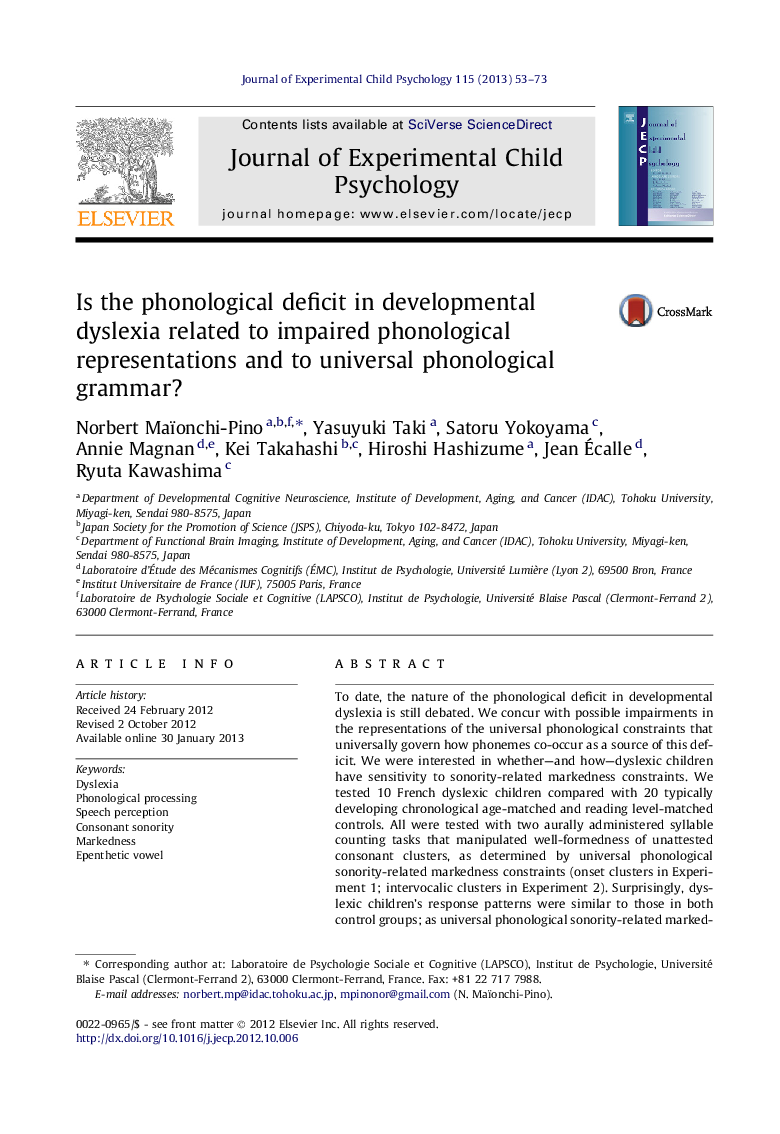| کد مقاله | کد نشریه | سال انتشار | مقاله انگلیسی | نسخه تمام متن |
|---|---|---|---|---|
| 918192 | 919461 | 2013 | 21 صفحه PDF | دانلود رایگان |

To date, the nature of the phonological deficit in developmental dyslexia is still debated. We concur with possible impairments in the representations of the universal phonological constraints that universally govern how phonemes co-occur as a source of this deficit. We were interested in whether—and how—dyslexic children have sensitivity to sonority-related markedness constraints. We tested 10 French dyslexic children compared with 20 typically developing chronological age-matched and reading level-matched controls. All were tested with two aurally administered syllable counting tasks that manipulated well-formedness of unattested consonant clusters, as determined by universal phonological sonority-related markedness constraints (onset clusters in Experiment 1; intervocalic clusters in Experiment 2). Surprisingly, dyslexic children’s response patterns were similar to those in both control groups; as universal phonological sonority-related markedness increased, dyslexic children increasingly perceptually confused and phonologically repaired clusters with an illusory epenthetic vowel (e.g., /ʁəbal/). Although dyslexic children were systematically slower, like both control groups, they were influenced by universal sonority-related markedness constraints and hierarchically ranked constraints specific to French over evident acoustic–phonetic contrasts or sonority-unrelated cues. Our results are counterintuitive but innovative and compete to question an impaired universal phonological grammar because dyslexic children were found to have normal universal phonological constraints and were skilled to restore phonotactically legal syllable structures with a language-specific illusory epenthetic vowel (i.e., /ə/-like vowel). We discuss them regarding active phonological decoding and recoding processes within the framework of the optimality theory.
► Dyslexic children are sensitive to phonological sonority-related markedness.
► Dyslexic children misperceive ill-formed CC clusters into well-formed CVC clusters.
► Dyslexic children use an illusory epenthetic vowel as a phonological repair.
► Dyslexic children exhibit a single speed of processing deficit.
► Sonority-unrelated cues do not primarily influence misperception and repair process.
Journal: Journal of Experimental Child Psychology - Volume 115, Issue 1, May 2013, Pages 53–73